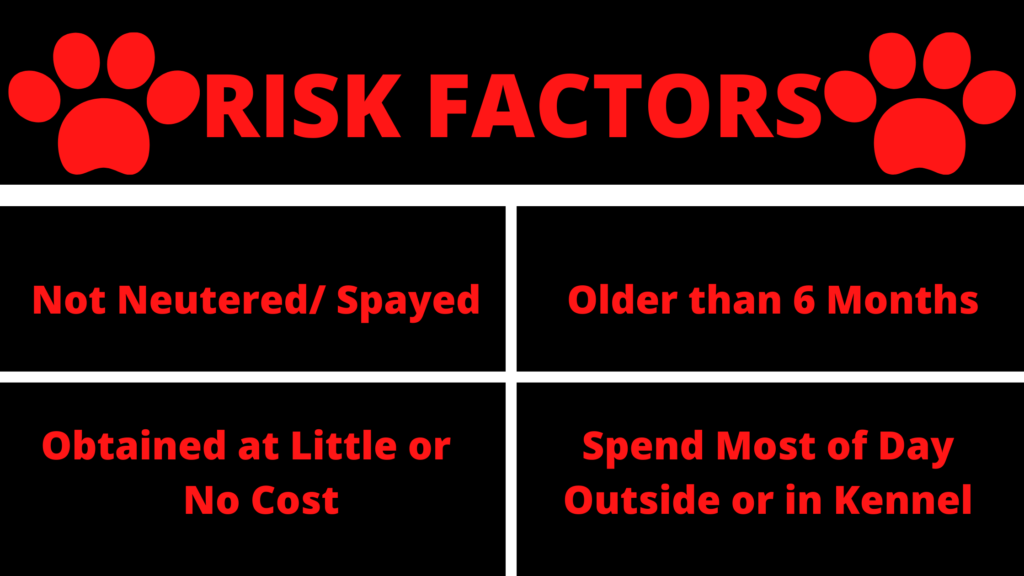Any rescue volunteer can tell you it’s a somber moment when a dog is turned in. According to the ASPCA, approximately 3.3 million dogs enter shelters every year, and about a third is attributed to owner turn-in. So why do people give up their dogs and what can we do to help prevent it?
The National Council on Pet Population Study and Policy (NCPPSP) have found the reasons given by owners can be condensed into two categories: owner-lifestyle related, like moving, difficulty finding pet-friendly housing, financial difficulties, and other owner personal problems; and behavioral issues, like attacking another animal, hyperactivity, and biting someone.
Thanks to the NCPPSP’s ongoing studies, risk factors have been identified that associate with increased relinquishment, which point to inappropriate care expectations and/or attachment. In order to approach this complex problem my hypothesis is that if adopters are given basic training and behavioral tips along with resources on where to go for help, they will adopt a more realistic expectation of pet ownership thus lowering the number of dogs surrendered to shelters.
Identifying Risk Factors

According to the 1998 NCPPSP study, “Dogs at increased risk for surrender were sexually intact, obtained at little or no cost, older than 6 months when obtained, spent most of the day in a yard or crate, and were more work than expected. Dogs were more likely to be perceived as more work if they were sexually intact, exhibited frequent problem behavior, and were obtained from an animal shelter. Factors that seemed to reduce relinquishment were regular veterinary care and participation in an obedience class.”
Analyzing and addressing these risk factors is important for animal advocates, veterinarians, and even potential adopters in approaching this complex problem. The studies show that most pets surrendered to shelters are still sexually intact, while every dog adopted from a shelter is neutered before adopted, it can be assumed these pets come from non-shelter resources.
This points to the importance of finding ways to reach outside of the rescue community to educate on the importance of neutering/ spaying and to dispel any misinformation. Truthfully, not only are their medical benefits but behavioral as well. To learn more check out what ASPCA has to say on the subject.
Another big reason pet parents delay or forgo spaying is due to affordability. This 2015 study on who and why pet parents choose to rehome found that owners with an income below $50,000 were at a higher risk of rehoming due to financial and housing issues. When asked what free or low-cost services would have helped and increase the chance of keeping the relinquished pet: 40% reported veterinary care, 34% reported training or behavior help, 30 % reported spay/neuter services, 30% reported pet food, 30% temporary pet care or boarding, and 33% expressed a need for access to pet-friendly housing.
Since financial and housing difficulties are two major reasons for rehoming, increasing access to these resources along with engaging pet owners outside of the rescue community will potentially increase pet retention and decrease the number of animals in shelters.
Owner Expectations
According to the ASPCA’s National Rehoming Survey, behavioral issues, like hyperactivity, aggression, and using the bathroom inside are the top reasons for rehoming Fido (47%). Although most blame the dog, studies point to the owner’s inappropriate expectations and inadequacy to understand the needs of a dog that cause the problems. For example, there is an increased risk of rehoming in dogs who spend most of their time in crates or outside. This could be attributed to behavioral issues stemming from isolation and/or made worse by continued isolation. There is good news though, owners who received behavioral advice from a veterinarian or other professional are at 94% lower risk of relinquishment. This highlights the beneficial effects of interventions, such as obedience classes and regular veterinary care.
An interesting find was that dogs adopted from shelters were perceived as more work. This shows the need for implementing community education programs, giving access to resources, and following up on adoptions in order to have long term successful adoptions.
Additionally, setting proper expectations and addressing behavioral issues can increase attachment towards a pet. This study shows a strong correlation between attachment and reduced risk of relinquishment. Another theory is that the time spent together doing things, like walking them, playing with them, or the shared rewards felt when participating in obedient classes, increases attachment.
Importance of Play and Exercise
Play and walks are especially important in helping behavior. If you have a very hyper dog a combination of play, walks and learning tricks at home can make life easier for pet parents. The same can be done to make a shy dog feel more confident. Petmate.com highlights other important benefits of play.
The folks at Rescue Dog Games already know how important play is in the lives of dogs and they’ve made it their mission to bring Atlanta together for a fun day of play while bringing awareness to rescue shelters and organizations across the Atlanta area.
To learn more about their organization: Click Here!
To Get Involved with Rescue Dogs: Click Here!
Resources
https://www.aspca.org/animal-homelessness/shelter-intake-and-surrender/pet-statistics
http://www.naiaonline.org/uploads/WhitePapers/RelinquishedAnimals.pdf
Jennifer Y. Kwan & Melissa J. Bain (2013) Owner Attachment and Problem Behaviors Related to Relinquishment and Training Techniques of Dogs, Journal of Applied Animal Welfare Science, 16:2, 168-183, DOI: 10.1080/10888705.2013.768923
https://escholarship.org/content/qt9f79z91b/qt9f79z91b.pdf?t=pq29ou
